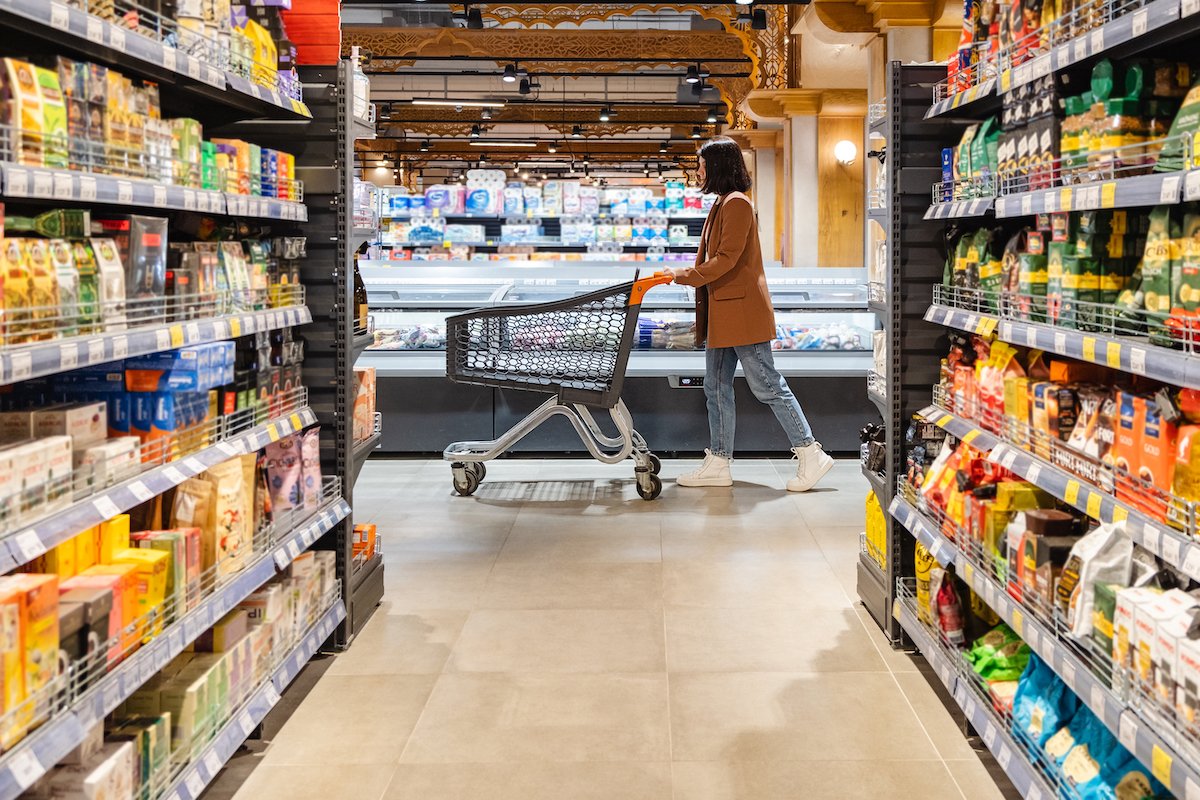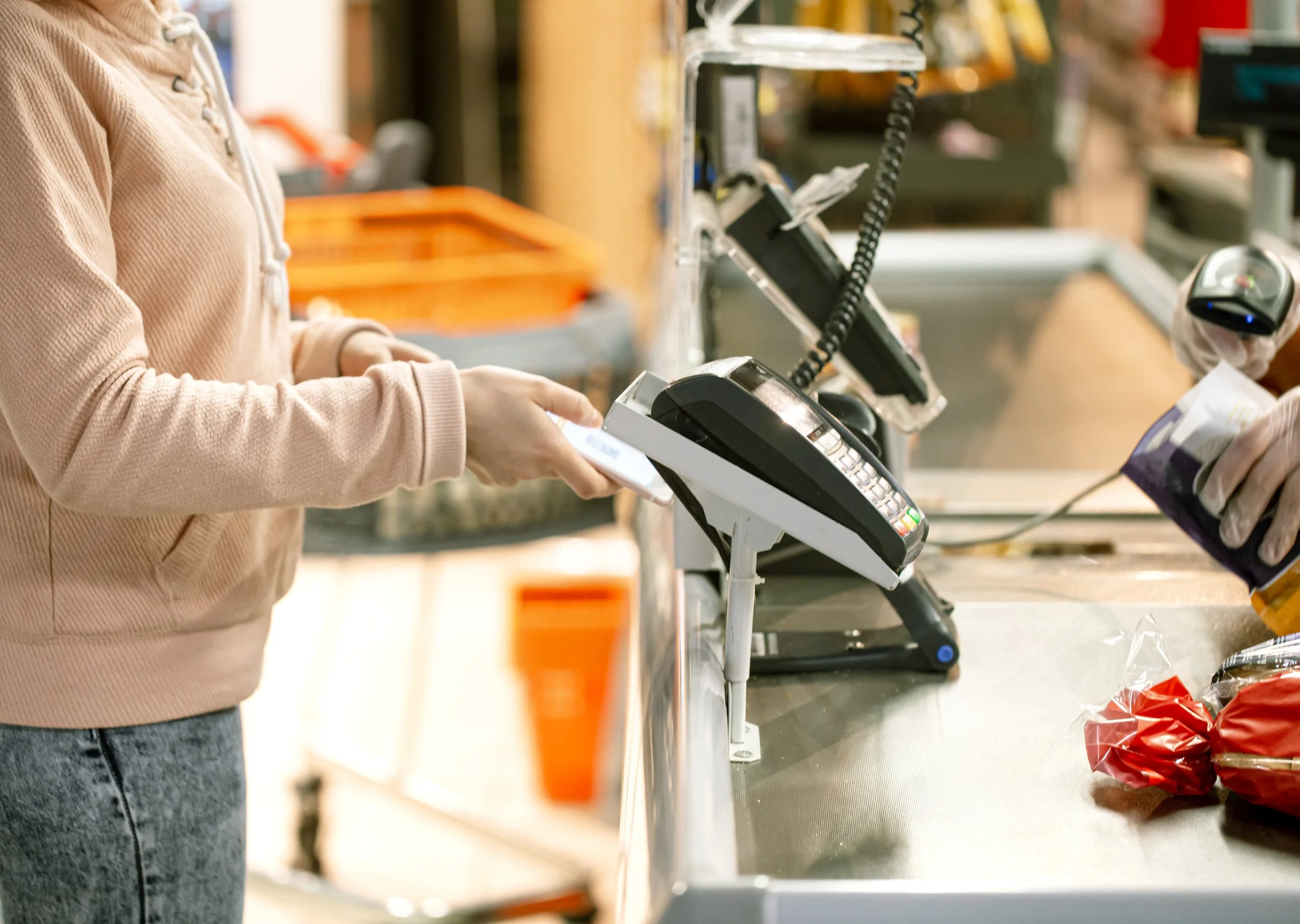Stocking Merchandise in a Retail Food Environment
Languages: English
Media Editing: The video module(s) in this subject are editable under our Content Studio offering unless otherwise indicated. For more information about Content Studio, contact your CSM.
Description: In a retail food environment, it takes a lot of work to receive, sort, stock, and present merchandise in a way that fosters customer loyalty. This subject covers the importance of consistent merchandise and tag placement, how to make sure there is enough stock to satisfy customer demands, and how to move stock safely from the back room to the sales floor. Learners are also taught best practices for receiving and organizing inventory quickly and efficiently and how stocking certain items first can boost employee morale.
Languages: English
Media Editing: The video module(s) in this subject are editable under our Content Studio offering unless otherwise indicated. For more information about Content Studio, contact your CSM.
Description: In a retail food environment, it takes a lot of work to receive, sort, stock, and present merchandise in a way that fosters customer loyalty. This subject covers the importance of consistent merchandise and tag placement, how to make sure there is enough stock to satisfy customer demands, and how to move stock safely from the back room to the sales floor. Learners are also taught best practices for receiving and organizing inventory quickly and efficiently and how stocking certain items first can boost employee morale.
Languages: English
Media Editing: The video module(s) in this subject are editable under our Content Studio offering unless otherwise indicated. For more information about Content Studio, contact your CSM.
Description: In a retail food environment, it takes a lot of work to receive, sort, stock, and present merchandise in a way that fosters customer loyalty. This subject covers the importance of consistent merchandise and tag placement, how to make sure there is enough stock to satisfy customer demands, and how to move stock safely from the back room to the sales floor. Learners are also taught best practices for receiving and organizing inventory quickly and efficiently and how stocking certain items first can boost employee morale.
Topics
Preparing Shelves for Stocking in a Retail Food Environment
-
How your store presents its merchandise has an impact on the customer’s shopping experience. In this topic, learners are taught how to organize and stock shelves, so customers can find what they are looking for. Learners are also introduced to Planograms, what they are, and why they should be used/followed, as well as some best practices for transporting stock throughout the store.
-
Questions (level 1, 2, 3)
Video module
-
This topic is currently available in English.
-
All grocery store shelves should be tidy/organized, have appropriate tags/labels, and be clean, so customers can quickly and easily find the items they’re looking for.
Planograms are used by most grocery stores to help organize and display related products.
Planograms indicate the placement of a product and number of ‘facings’ (columns) a product should have on a shelf. They are designed to maximize sales, so they should not be altered.
(Ex: Five facings of Lay’s chips vs two facings of the store-brand chips).
Always follow your store’s preferences for placing and/or displaying price/product tags on shelves so that the shelves, and the customers’ experiences, are consistent, predictable, and organized.
Make sure tags with the product’s name, UPC (Universal Product Code), and price are displayed for each product on a store shelf, so customers can easily see the price of their items.
Note: One brand may have more than one type of product with similar names, so the UPC on the tag helps the customer identify the correct price.
When moving stock from the back room to the sales floor, organize the stock carts and U-boat carts, so they follow the flow of the store layout. This helps stocking move faster and more efficiently.
When loading stock carts, keep heavier boxes on the bottom of the cart, so other products aren’t damaged and to keep the cart from tipping over.
Stocking Shelves in a Retail Food Environment
-
In this topic, learners are taught how to make sure the shelves they are stocking provide customers with quality products to choose from. This ranges from ‘facing’ products (also called blocking, zoning, fronting, straightening, rumbling, recovery, or conditioning), removing damaged products, and checking sell-by dates. Learners are also taught practical tips for keeping themselves and merchandise safe while using stock carts and ladders to stock merchandise.
-
Questions (level 1, 2, 3)
Video module (This module was created in a tool that is not supported by our Content Studio offering.)
-
This topic is currently available in English.
-
In retail, ‘facing’ is pulling all the items on a shelf to the front, turning their labels towards the front, and leveling stacked items so that the shelves appear fuller and more organized.
In the retail industry, ‘facing’ is also called blocking, zoning, fronting, straightening, rumbling, recovery, or conditioning.
When stocking, remove any items that are expired, damaged, spoiled, or leaking, and deal with them according to your store’s procedures. This helps to make sure customers have quality products to choose from.
For products with sell-by dates, make sure products with later sell-by dates are stocked towards the back, and move items with close sell-by dates to the front of the shelves, so they are sold first.
Remove products that are past their use-by date immediately and follow your store’s process for disposing of them. Selling food past its use-by date is a food code violation.
Check end caps, displays, and fast-selling products, like bottled water, soda/pop, sale items, etc., regularly to make sure there is enough product on the shelves to satisfy customer demands. Empty shelves frustrate customers and can impact their loyalty.
Don’t load inventory on stock carts or U-boat carts higher than the side rails or higher than your head; this helps keep the load secure and makes sure the cart can fit through the doorways.
Always use an approved ladder, stool, or step ladder to reach higher items. Do not stand on shelves, boxes, or chairs because this can lead to injuries or damaged products.
Avoid pushing stock carts or pallet jacks because you can’t see what’s in your path. Pull carts and equipment, so you can see and properly maneuver around people and items in your path without risking injury.
Receiving & Organizing Inventory - Retail Food Environment
-
While the back room and stock room aren’t visited by customers, how they are kept and organized can have a significant impact on parts of the store the customers do visit. In this topic, learners are taught what to do before and after receiving a shipment, how they can help organize new shipments faster, how to help keep the backroom from getting cluttered, how unpacking and stocking bulk items can create feelings of immediate gratification in their peers, and more.
-
Questions (level 1, 2, 3)
Video module
-
This topic is currently available in English.
-
Make sure the back room and receiving area are tidy and clean, especially before receiving a new shipment, so you don’t mix up new products with older ones, and so you can work more effectively.
To help organize new shipments faster, separate bulk products/pallets from pallets with mixed products that need to be sorted.
Before you start sorting a new shipment, make sure you have enough stock carts available, so you can sort and move the shipment more efficiently.
When sorting a shipment, take bulk items to the sales floor first (bottled drinks, bathroom tissue, pet food, etc.). This helps keep the back room from getting cluttered and creates feelings of immediate gratification in employees.
When unloading a new shipment, always rotate back stock, so older items are taken to the sales floor before items from the newer shipment. This helps reduce waste and makes sure unneeded products aren’t reordered.
Move frozen and refrigerated products to an appropriate freezer or refrigerated cooler within 20 minutes of receiving the shipment, so they don’t start to leak, defrost, or go bad.
Designate employees with the best knowledge of the store layout and products to sort new shipments. This will help increase speed and make sure items are sorted properly.
Always tidy and clean the back room after receiving a shipment, so you can verify that you didn’t miss any items and to make sure the area is ready for the next shipment.
Examples: Keep the floors clean and clear, stack pallets, boxes, cases, etc., take out garbage, recycling, compactor items.
It is against federal safety laws to operate a powered pallet jack unless you are properly trained and certified and over 18 years old.






